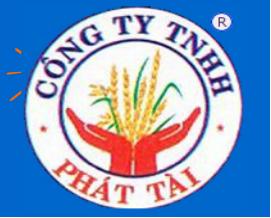Monument Cotton rice
in front of the People’s Committee of An Giang province today
Vietnamese people started to go to An Giang land from time to time, so far not seen the record books clearly. However, according to folk legends and some vestiges, there have been a number of Central Vietnamese groups who have come here for a long time.
Although life initially encountered many difficulties, but they still persevered in finding live land. They are scattered along the banks of the Tien and Hau rivers.
When Nguyen Huu Canh entered the South, there were Vietnamese people in Binh My (Chau Phu), Chau Doc and Cay Sao Island (Gia Long Island). Legend has it that when the Cuu Long (1700) navy went down, Nguyen Huu Canh stopped at places where Vietnamese stayed to visit and encourage people to keep friendly despite being of the same race. He also allowed some of the survivors to stay along the Chau Phu, Chau Doc, Tan Chau and Cho Moi plains.
The people of Cu Lao Giaong are called “two districts” (Phuoc Long and Tan Binh). They are considered a model of fine customs and habits, keep up the eating habits, thinking of the Vietnamese. From Cho Moi to Cai Ho according to the canal, we meet some of their families, their grandparents come here from Gia Long, Minh Mang or longer (6 generations).
At Cu Lao Cham, there is an ancient site called Pho Tho. This shrine belongs to the Nguyen family from Binh Dinh, the descendants of today are living in the 7th and 8th generations. They live in crowded areas. The Vietnamese come to the South to settle down with their parents, wife and children. And when it came, I could not go, because it was too far.
Thanks to the policies of the Nguyen Nguyen, the reclamation of the south of the Vietnamese people quickly and rapidly.
When An Giang province was newly established, along the right bank of the Tien River, the population was relatively crowded, concentrated in Giaong Island. A number of villages and communes were established. Private island is not very large, but easy birth, so gathered four villages.
On the right bank of the Hau River, sparsely populated. There are only Binh Thanh Tay (opposite Binh Thanh Dong), Binh Duc, My Phuoc.
An Giang area consists of two new and old separate areas:
– Tan Chau, Zhao, Cho Moi are easy to cultivate, crowded, old villages for a long time.
– On the right bank of the Hau River, a wild mountain forest, hard to cultivate land, sparse people, new villages.
The immigrant settlement in An Giang made great contributions to the Thoai Ngoc Hau, beginning in the year of Dinh Chu 1817. At that time many houses of farmers were erected, the temple also began construction. In 1818, according to the court order, Nguyen Van Thoai director of Dong Xuyen business training to Rach Gia, creating favorable conditions for the people on the two sides of the canal.
Nguyen Thi Thoai to finish the road from Chau Doc to Sam mountain, so that the people from Chau Doc to Sam mountain to the rice field, the next step to explore the Tinh Bien.
In the early nineteenth century, many Siamese invaded our country. Ha Tien, Chau Doc are the first and most damaged areas. In 1833, the Siamese invaded the Vinh Te canal, seized Chau Doc and overran Tan Chau. But only 5 years later, the population has gathered again, establishing dozens of villages scattered from Mount Sam along the banks of Vinh Te canal toward Ha Tien.
Chau Doc area is a dangerous frontier, both production and dealing with foreign invasion. Every savage villager is a frontier animal soldier.
Le Cong family of Thanh Hoa is one of the migrant groups to exploit Chau Doc (about 1785 – 1837). The seventh generation live here as well. The second group also publicly opened the Chau Doc area of Nguyen Khac, belonging to the descendants of Nguyen Van Thoai.
Under the reign of Minh Mang, most of the exiled criminals gathered in the area of Vinh Te to set up hamlets along the canal, gradually forming populated areas.
Nguyen Tri Phuong, when doing the porcelain trade in the South, had the initiative to set up border plantations in order to prevent the invasion of the people, concentrated in Chau Doc, Ha Tien. In 1854, Nguyen Tri Phuong reported the establishment of 21 plantations. Two years later, An Giang and Ha Tien provinces recruited 1,646 people, set up 159 villages.
During this time, Cham people in Chau Doc market (Da Phuoc, Chau Phong) also gathered in teams, led by a boss. From Chan Lap, Cham people took refuge in the territory of Vietnam to avoid civil war conflicts in Chan Lap, then settled in Tan Chau, An Phu. . . . .
At the same time, Catholics refrained from religious discrimination of Nguyen emperors from the outskirts of the island early in 1778, Bo (1779) and Nang (1845) increased the population. number of An Giang land.
Previous material on the origins of ethnic minorities in An Giang:
– Khmer: Indigenous people, most of them born in Vietnam should be called Khmer Vietnamese, most concentrated in Tri Ton and Tinh Bien. Their customs and language are no different from the Khmer in the mainland. They worship Buddhism, honor the monks, and are willing to give the pagoda the benefits they deserve. – Cham and Malay people have been living in Chau Doc since 1840. Cambodia.
– Hoa: According to No. 48 dated 21/8/1956 of the Ngo Dinh Diem government revision of the law of Vietnamese nationality, the births in Vietnam are described as Vietnamese. The followers of Bửu Sơn Kỳ Hương, Tuấn Hiếu Nghĩa. This force includes the people of the surrounding provinces (Gi
According to http://www.angiang.gov.vn
















